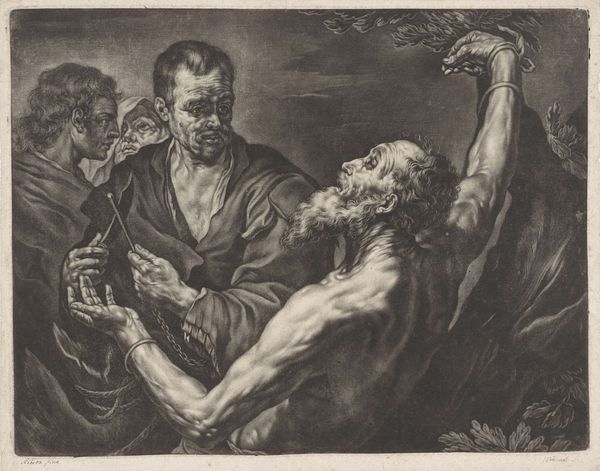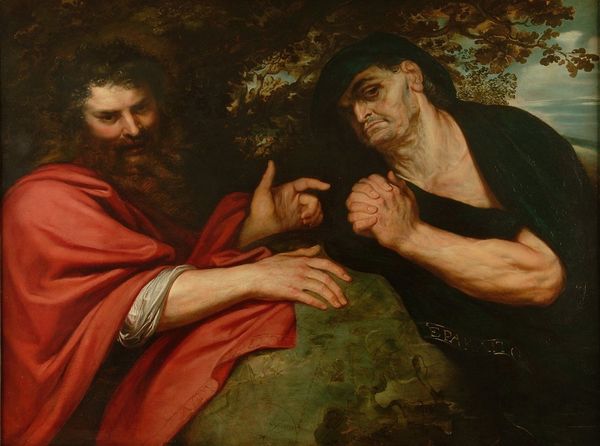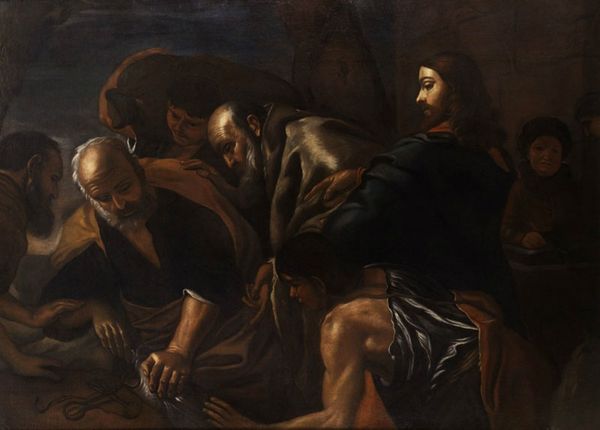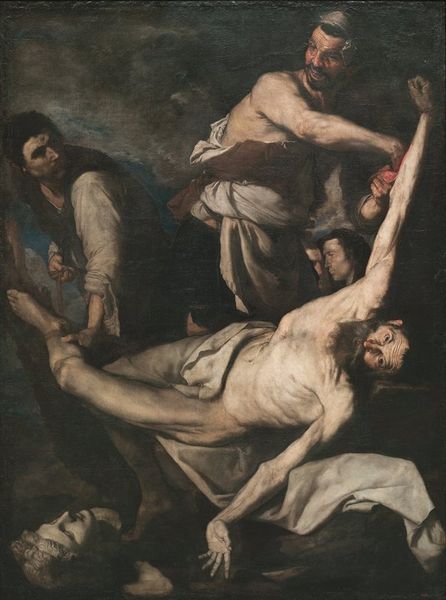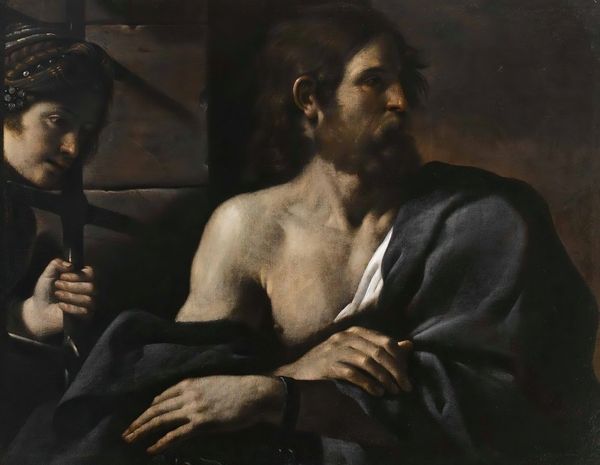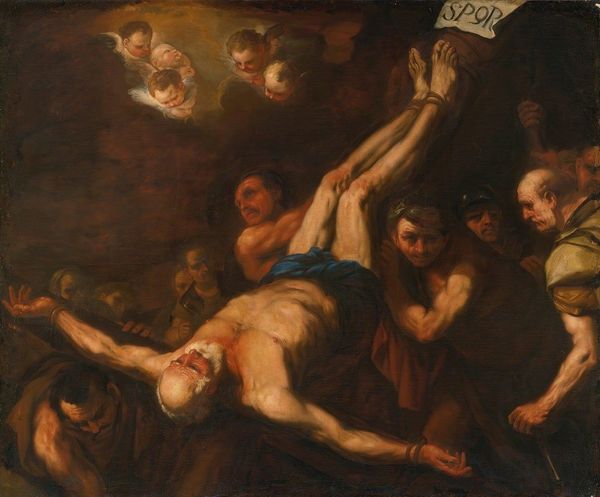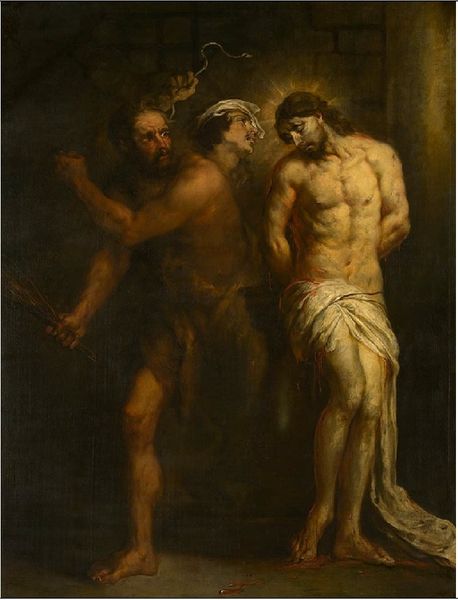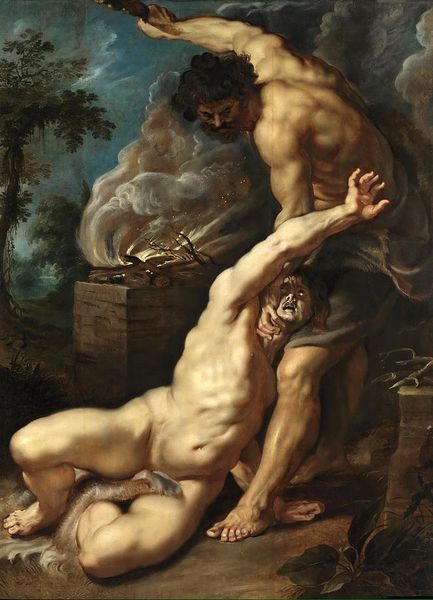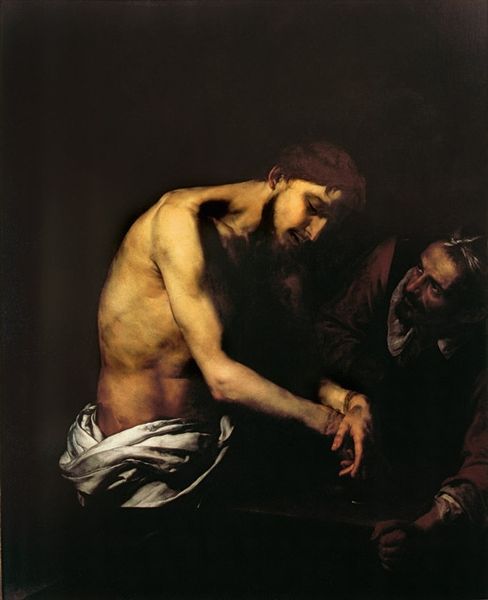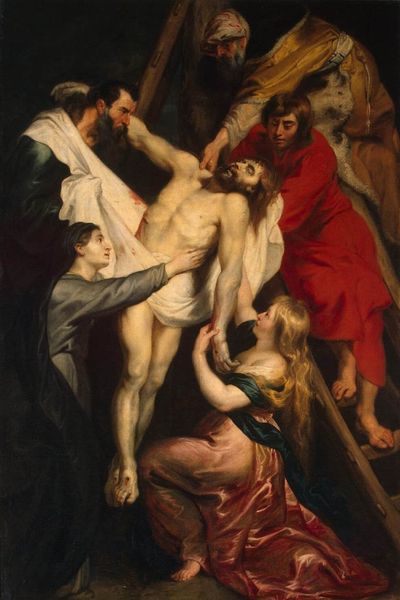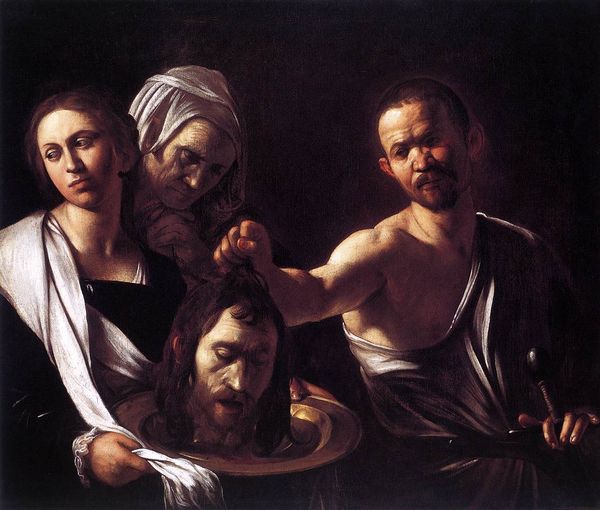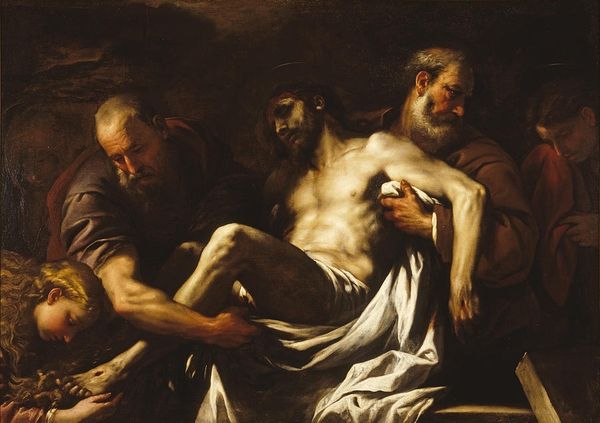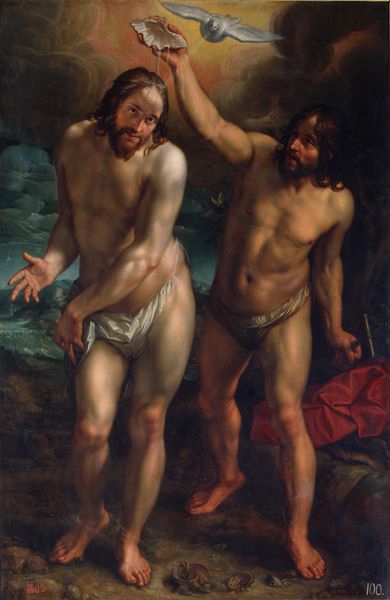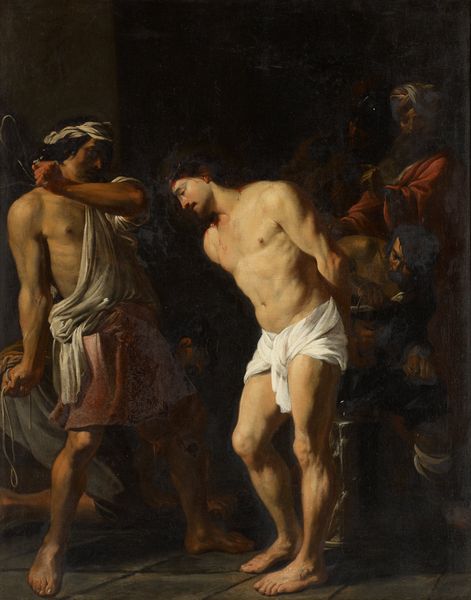
painting, oil-paint
#
baroque
#
painting
#
oil-paint
#
figuration
#
history-painting
#
nude
#
realism
Copyright: Public Domain: Artvee
Editor: Here we have Jusepe de Ribera’s *The Martyrdom of Saint Bartholomew* from 1634, rendered in oil paint. There's a disturbing, visceral quality to it, I think, mostly conveyed through the strained musculature and intense gaze of Saint Bartholomew. How do you interpret this work, especially considering its historical context? Curator: Ribera’s graphic depiction situates us within a larger dialogue concerning power, persecution, and religious identity. It's crucial to remember the historical backdrop: The Counter-Reformation was in full swing, and images like these were deliberately employed. This wasn't just art; it was propaganda meant to solidify religious allegiance through an emotional appeal to the viewer. What feelings does it evoke in you, and do you see this as a form of persuasive visual rhetoric? Editor: It does feel persuasive. The artist captures such an intimate moment that I feel guilty for even looking. But what about Saint Bartholomew himself? Does he represent more than just religious piety? Curator: Absolutely. Bartholomew can be viewed as a figure of resistance, albeit passive. Consider the power dynamics: A vulnerable, nearly nude man facing execution by men actively participating in torturing him. Does Ribera seem to portray him as simply a victim or someone embodying defiance, albeit quiet? How does that inform the sociopolitical narrative present? Editor: I see him now as more of a quiet revolutionary. Someone who refused to abandon his convictions in the face of tremendous brutality. That definitely shifts how I see this work and how the painter meant for the audiences of his time to consider religious prosecution. Curator: Exactly! Through his faith and sacrifice, Saint Bartholomew becomes a symbol of strength challenging the prevailing power structure, despite his physical vulnerability. Images of martyrdom often acted as focal points for communities resisting oppression on varied scales. Editor: This has really widened my understanding, thank you. I can now appreciate the piece as so much more than what I saw at first glance. Curator: Indeed. This allows us to delve deeper, perceiving these artworks not just as aesthetically pleasing pieces but potent commentaries on issues of identity, belief, and authority still resonating today.
Comments
No comments
Be the first to comment and join the conversation on the ultimate creative platform.
